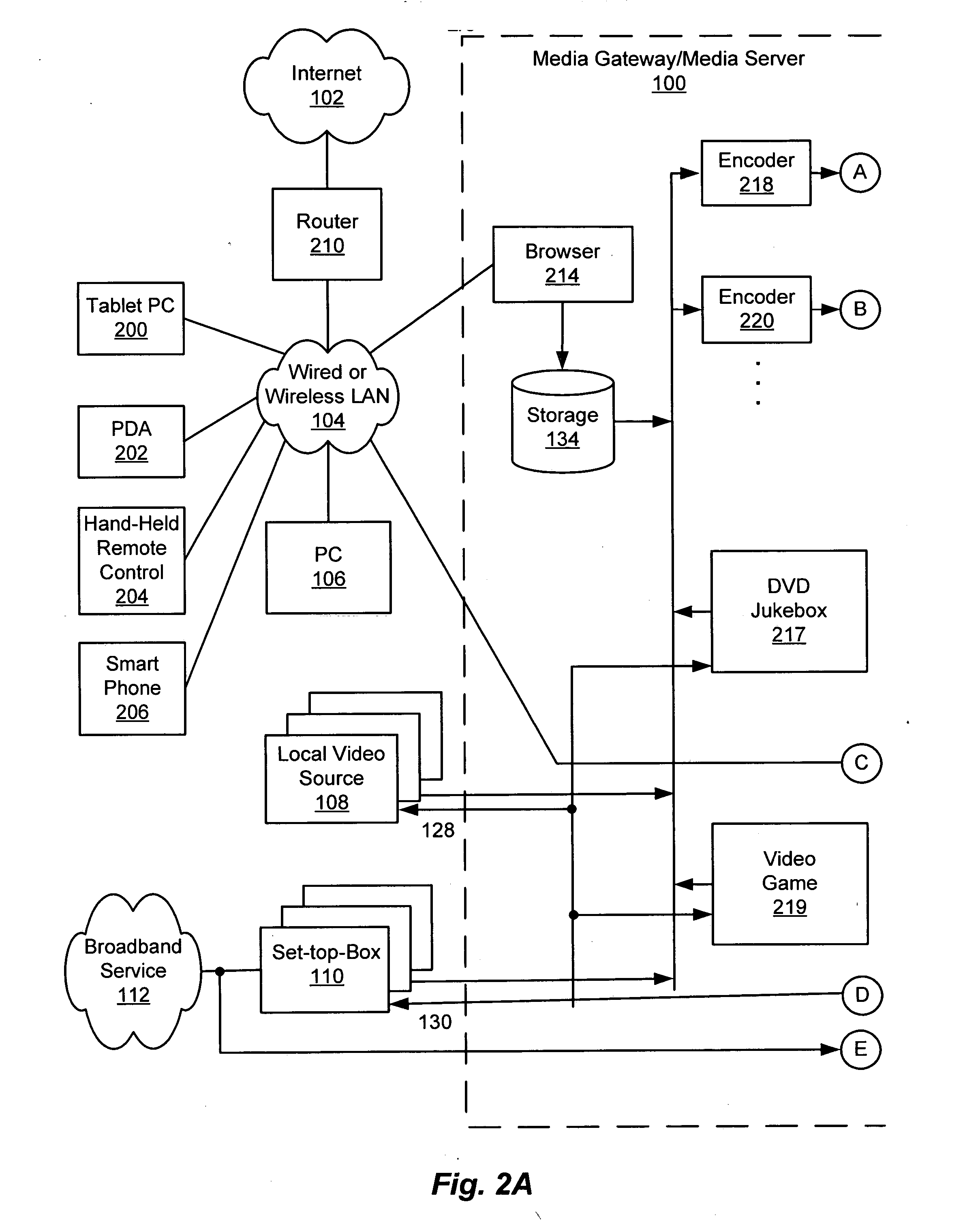Media gateway and server
a gateway and server technology, applied in the field of on-premises video distribution systems, can solve the problems of not being able to anticipate the system of which carrier a given television set belongs, and no known system can distribute video from these sources to one or more conventional television sets scattered throughout the house without impairing the quality,
- Summary
- Abstract
- Description
- Claims
- Application Information
AI Technical Summary
Benefits of technology
Problems solved by technology
Method used
Image
Examples
Embodiment Construction
[0019] Disclosed herein are apparatus and methods for distributing video, without impairment, from one or more sources, to one or more conventional televisions sets within a premises, such as a house. The video is distributed directly to the television sets, i.e., without requiring specially adapted hardware, such as a set-top-box, at each television set. FIG. 1 is a block diagram showing a context in which a centralized media gateway / media server (MGMS) 100 receives video from one or more sources 102, 104, 106, 108, 110 or 112 and, in response to commands from a peripheral control device 114 or 116, etc., distributes the video (or separately selected portions thereof) to each of a selected one or more of a plurality of conventional television sets 118, 120, 122, etc., over an in-home distribution medium 124. The MGMS 100 can also serve video that is stored in and / or generated by the MGMS 100. For example, the MGMS 100 can serve recorded programs and content guides to the television...
PUM
 Login to View More
Login to View More Abstract
Description
Claims
Application Information
 Login to View More
Login to View More - R&D
- Intellectual Property
- Life Sciences
- Materials
- Tech Scout
- Unparalleled Data Quality
- Higher Quality Content
- 60% Fewer Hallucinations
Browse by: Latest US Patents, China's latest patents, Technical Efficacy Thesaurus, Application Domain, Technology Topic, Popular Technical Reports.
© 2025 PatSnap. All rights reserved.Legal|Privacy policy|Modern Slavery Act Transparency Statement|Sitemap|About US| Contact US: help@patsnap.com



